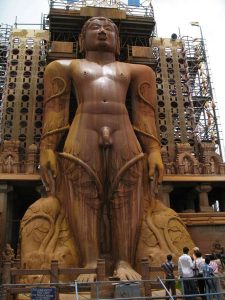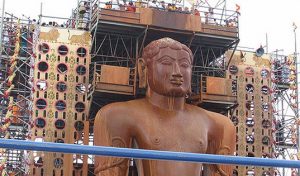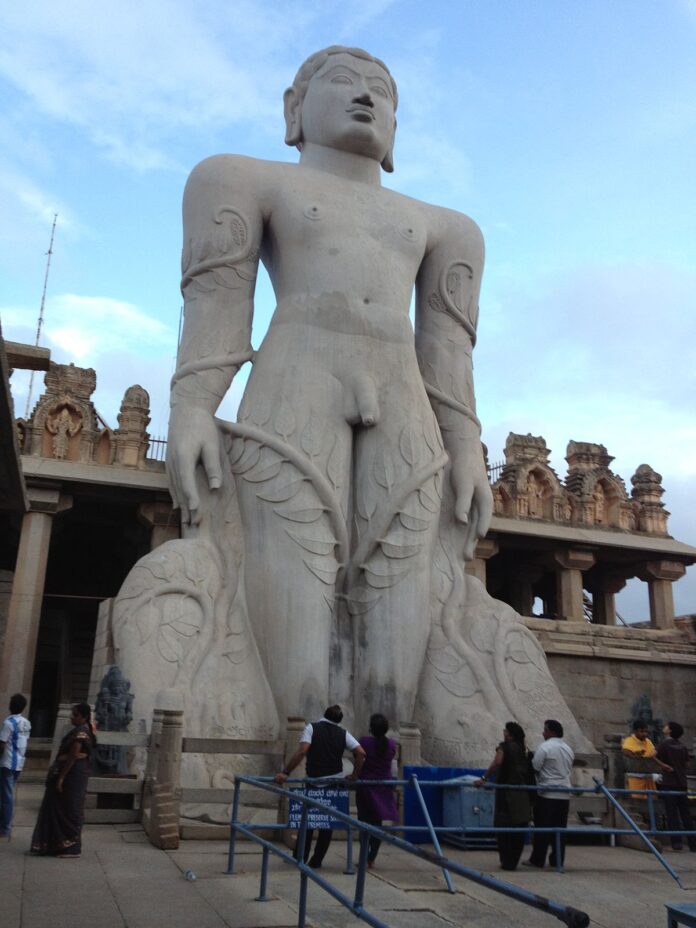At a distance of around 158 kms of Bengaluru and 83 kms of Mysore, there is a town situated in Karnataka known as the city of ponds and temples – Shravanabelagola. It is the most renowned Jain pilgrimage in South India. This place is one of the eminent heritage sites in Karnataka.
The place Shravanabelagola is famous for its Gomateshwara Temple also known as Bahubali Temple. Shravanabelagola has two hills, Vindhyagiri and Chandragiri. The 58 feet tall monolithic statue of Bahubali is located on Vindhyagiri Hill. The base of the statue has an inscription which praises the king who funded the effort and his general, Chavundaraya, who erected the statue for his mother. The Bahubali statue is both magnificent and munificent. Magnificent in form, it is a 57 feet high monolithic statue built in around 983 A.D. The Gomateshwara Statue can be viewed at a distance of 30 km.
History
According to the inscriptions at the base of the statue of Gommateshwara, it is said that Ganga Ruler Rachamalls’s able General and Commander-in-Chief Chavundaraya’s mother, Kalala Devi, saw a huge statue of Gommateshwara in her dreams. She vowed not to eat until her dream was realized. Chavundaraya decide to build the statue of Gommateshwara at Sravanabelgola, a site already sanctified by the Jains. Another legend has it that Chavundaraya arrived at this place overshadowed by two hills, Chandragiri and Indragiri, with a pond in between, on his way to pilgrimage with his mother. In a vivid dream, Chavundaraya saw himself shoot an arrow from the summit of Chandragiri to the adjacent hill, as directed by Kushmandini Yakshi and the figure of Gommateshwara flashed from the spot the arrow hit. Following this he commissioned the curving of the same image from a granite monolith under the supervision of sage Arishtanemi between 980 and 983 AD. The valley between the two hills around the pond was named Shravanabelgola (‘Shravana’ meaning saint; ‘Bel Gola’ meaning white pond).

About Bahubali
Bahubali was the son of Rishabhanatha, the first of the 24 Tirthankaras in Jainism and is also known as Gommatesha. The Gommateshwara statue is dedicated to him. From a 9th century Sanskrit poem, Adi Purana, written by Digambara monk Jinasena, the story of Bahubali is deciphered. Bahubali was born of the Ishvaku Dynasty in Ayodhya. He challenged the ‘chakravartin’ supremacy of his elder brother Bharat who had won over submission of rulers from the six divisions of the earth as well as 98 of his brothers. Bahubali won the three contests of the challenge against Bharat but was disgusted by all the violence that being a king entails. He subsequently abandoned his kingdom, family and other worldly attachments to become a Digambara monk. He meditated for one year in the kayotsarga posture to attain omniscience or ‘Gyana’ and became the first human of this kalpa (world age) to gain liberation (siddha).

Mahamastakabhisheka Festival
Mahamastakabhisheka is one of the biggest and important festivals for Jain community, celebrated once every twelve years at Shravanabelagola city situated in Karnataka. It is primarily a head anointing (Abhishek) ceremony of 57 feet high monolithic idol of Lord Gomateshwara Bahubali, a revered Jain icon. He holds a very high regard among the Jain people as he was the first one to have attained salvation. The last ceremony was last held in February 2018 and the next abhishek is scheduled in 2030.



